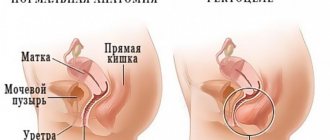Antibiotics for infants
It's no secret that potent antibacterial drugs help defeat many diseases. That is why many mothers, whenever their baby has a cold, run to the pharmacy and select the medicine themselves. Others, fearing side effects, postpone drug therapy until the last minute. Only a pediatrician can figure out in which case an antibiotic is needed and select the most effective remedy.
Indications for antibiotic therapy
In infancy, it is difficult to avoid all kinds of infections. Some of them are mild and do not require specialized treatment, but in some cases the child may need an antibacterial drug to recover. Only a pediatrician can select antibiotics for an infant after a thorough examination.
It is important to remember that this group of drugs is potent and has a number of unpleasant side effects, so they are prescribed only for strict indications:
- An increase in body temperature above 38 degrees, lasting more than 3 days.
- Severe infectious diseases (acute bronchitis, pneumonia, purulent otitis and sinusitis, tonsillitis).
- Life-threatening illnesses (meningitis).
- Prolonged course of inflammatory processes.
- Changes in the general blood test (increased ESR, leukocytosis with the appearance of young forms of white blood cells).
In this case, the doctor will prescribe a broad-spectrum antibacterial agent or select a drug taking into account the sensitivity of the microorganisms that caused the disease.
Medicines for babies
The immune system of a newborn child is immature and is not able to fight many pathogenic microorganisms. Antibodies that enter the baby's body with mother's milk have special protection, but sometimes these protective forces are not enough to eliminate the bacterial infection. That is why prescribing antibiotics for infants is the primary task of a specialist when identifying a severe infectious process.
Modern effective drugs approved for use in young children include:
- Penicillin antibiotics – Amoxicillin, Augmentin.
- Cephalosporins – Cefuroxime (Zinnat, Zinacef), Ceftriaxone.
- Macrolide group drugs – Azithromycin (Sumamed), Erythromycin.
- Fluoroquinolones, which are usually prescribed as reserve drugs in severe cases when other antibiotics have not helped - Levofloxacin, Moxifloxacin.
In case of emergency, broad-spectrum medications will be prescribed. But if there is no threat to the patient’s life, it is better to wait and determine the type of microorganisms, as well as its sensitivity to antibiotics. This will help you immediately select the most effective drug and minimize the risk of adverse reactions.
Not recommended for use
Prescribing antibiotics and any other potent drugs to infants should be carried out according to strict indications, after a thorough examination, interpretation of test data and establishment of an accurate diagnosis.
There are groups of antibiotics that are contraindicated for use in infants. They are prescribed only in special, severe cases, when other drugs have not helped and the risks of the disease largely exceed the consequences of taking the medicine.
The following are not used in newborns:
- Levomycetin is a toxic drug that, in addition to dyspeptic symptoms and dysbacteriosis, can damage the patient’s bone marrow and cause the most severe pathology, aplastic anemia. This antibiotic is used only in extremely rare cases (typhoid fever, tularemia).
- Aminoglycosides (Streptomycin, Neomycin, Gentamicin) – which are ototoxic and can lead to hearing impairment and even deafness in children.
- Biseptol is a hepatotoxic drug from the sulfonamide group. It is used extremely rarely due to the fact that many bacteria are resistant to the action of its substance.
- Tetracyclines (Tetracycline, Doxycycline) – these medications lead to the destruction of tooth enamel.
For young children, drugs from the fluoroquinolone group are extremely rarely used. Despite their high efficiency and relative safety, they lead to a pronounced side reaction - disruption of the intestinal flora.
Contraindications
Like any other drugs, antibiotics have a number of contraindications for use. They may mean the inability to use the drug or its use with extreme caution (dosage adjustment or prescription of concomitant medications).
Antibiotics should not be prescribed for:
- Increased individual sensitivity to the drug or its components.
- Allergic reactions in infants.
- Intestinal dysbiosis (microflora disturbances may worsen under the influence of medications).
- Infectious mononucleosis and lymphoblastic leukemia are diseases for which some antibiotics are contraindicated.
- Damage to the kidneys and liver - these pathologies require a reduction in dosage and selection of gentle medications.
Before prescribing antibiotics to an infant, the doctor will take a medical history, carefully examine the child and identify possible contraindications to antibacterial therapy.
Side effects
A fragile child's body is more susceptible to the toxic effects of drugs. That is why adverse reactions to antibiotics are recorded in infants much more often than in adults. These include:
- Dyspeptic disorders (indigestion, abdominal pain).
- Intestinal dysbiosis (diarrhea).
- Candidiasis of the oral mucosa.
- Allergic skin rash.
- Liver damage.
- Kidney pathologies.
- Agranulocytosis.
- Disorders of the nervous system.
When treating with antibiotics, it is necessary to strictly adhere to the dosage prescribed by the doctor, which the specialist calculates taking into account the severity of the disease, the age and weight of the baby.
Antibiotic therapy for children
Treatment of infectious diseases in infants has a number of features, which the doctor will definitely tell the mother about at the appointment.
The most important thing is strict adherence to the prescribed dosage and duration of therapy. You should not stop taking the drug before the time specified by your doctor, even if all symptoms disappear completely, as this can lead to a chronic form of the disease and the emergence of antibiotic-resistant strains.
Along with the antibacterial agent, it is necessary to take probiotics and vitamin-mineral complexes in order to restore and maintain normal intestinal flora.
Medicines for infants
Antibiotics for children can be prescribed both in injection form and for oral administration, which is typical for treatment at home. Infants cannot swallow tablets and capsules on their own, so medications are prescribed to them in the form of suspensions, syrups or soluble tablets. Such drugs include:
- Sumamed (Azithromycin) is an antibacterial agent in the form of a suspension, acceptable for use from 6 months of age.
- Zinnat – granules for preparing suspensions.
- Flemoxin Solutab is a soluble tablet with a pleasant fruity taste.
Antibacterial agents are a necessary component of complex therapy for many diseases. You should not ignore the doctor’s prescription and refuse the medicine for fear of its side effects, since the disease causes much more harm to the baby’s delicate body.
elaxsir.ru
Antibiotics for a newborn
Antibiotics for very small creatures can only be used as prescribed by an experienced doctor and in very rare cases. Under no circumstances should you use medications on your own, relying on the advice of friends or relying on information on the World Wide Web.
Antibiotic drugs are sometimes simply necessary if a child has certain diseases. The use of antibiotics for newborns should not be neglected. *The presence of infectious manifestations of the intestines, accompanied by severe diarrhea and vomiting, is often treated using injections containing ampicillin. *Bacterial and staphylococcal infections with mild and severe manifestations cannot be cured without the participation of 1st generation cephalosporins. The difference in dosage depends on the age of the baby, the severity of the disease and the blood test of the sick child. *Metronidazole is a universal drug for the treatment of various bacterial and infectious diseases of newborns at various stages.
Whether antibiotics are safe for newborns - decide for yourself: statistics do not have data on the particular danger of antibiotics when taken correctly and strictly as prescribed by the pediatrician.
Contraindications to the use of drugs
Is it possible to give antibiotics to a newborn baby without special diagnosis? This cannot be done, because many factors are taken into account when prescribing the drug. *Prematurity of the baby and general health. *The baby’s weight is not appropriate for taking such medications. *Presence of allergic reactions and intolerance to the drug. *Mild form of the disease that does not require intensive treatment with antibiotics. *In case of severe diarrhea and a certain form of dehydration in infants, antibiotics should not be used without special instructions and auxiliary medications that restore the water balance of the tiny organism. *Pathological deviations in the development of a child are sometimes a ban on the use of such treatment methods.
Before agreeing to treat your baby with rather aggressive medications, you need to be sure of the complexity of the situation and the competence of the doctor. Normal nasal congestion or coughing is often a lack of oxygen in the room and does not require the intervention of antibiotics.
Share the article on social media. networks:
7ya-i-ya.ru
Methods for restoring the immune system after taking an antibiotic
The unspoken task of the intestines is to stimulate the immune system. Therefore, after a course of using antimicrobial drugs, you should take care of the functioning of the digestive tract. To correct immunity, all kinds of drugs, vitamins, biological additives, herbal and folk remedies, as well as physical exercises are used.
Rehabilitation after antibiotics – School of Dr. Komarovsky
Before boosting a child’s immunity after antibiotics in one way or another, it is necessary to consult a doctor.
Treatment of dysbiosis
Foreign specialists have not used the diagnosis “dysbacteriosis” in their practice for a long time. And only domestic specialists continue to use a lot of medicines to treat it. To restore the immune system in the intestines, it is important to follow dietary habits after an antibiotic. If a microflora disorder is observed in an infant, then breastfeeding will make an invaluable contribution to the normalization of the digestive tract. If intestinal dysbiosis occurs after a course of treatment, then therapy involves the use of drugs to normalize the microflora.
Antibiotics for newborns
Characteristics of the main antibiotics for newborns. Benzylpenicillin (penicillin) in departments for the pathology of newborn children is used only for the prevention and treatment of congenital syphilis. Ampicillin is active against some gram-positive and gram-negative pathogens: group B streptococci, staphylococci, enterococci, E. coli, H. influenzae and listeria. At the same time, ampicillin is hydrolyzed by all β-lactases, which significantly limits the scope of its clinical use in newborns.
In newborns, this antibiotic is used mainly in the first 10 days in children with suspected ante- or intrapartum infection, alone or with gentamicin. In older children, salt can be used as a primary drug in the treatment of urinary tract infections.
Aminoglycosides. Representatives of this group include gentamicin and tobramycin (2nd generation), amikacin and netromycin (3rd generation).
Aminoglycosides have a wide spectrum, having an active effect on microorganisms of the Enterobacteriaceae family, Pseudomonas aeruginosa, Haemophilus mlluenzae and Staphylococcus aureus and epidermidis. But they have little effect on streptococci and enterococci, and anaerobes are not sensitive to them.
The activity of different aminoglycosides against the same pathogen is not always the same; Pseudomonas aeruginosa is most sensitive to tobramycin, to a lesser extent to gentamicin, and even less to amikacin. On the other hand, a number of strains resistant to gentamicin and tobromycin remain sensitive to netromycin and amikacin, and a number of microorganisms resistant to netromycin are sensitive to amikacin.
It has been established that most strains of gram-negative bacteria resistant to 3rd generation cephalosporins are also resistant to gentamicin, but may remain sensitive to amikacin.
All antibiotics for newborns from this group are characterized by oto-, nephro- and neurotoxic effects. The most ototoxic drug is amikacin, followed by tobramycin, gentamicin and netromycin.
In terms of nephrotoxicity, the first place belongs to gentamicin and tobromycin, followed by amikacin and to a lesser extent this applies to netromycin.
1st generation cephalosporins (kefzol, cefazolin) have antibacterial properties against methicillin-sensitive staphylococci, group A hemolytic streptococci, pneumococci, E. coli, some species of Klebsiella, H. influenzae and Pr. mirabilis.
Antibiotics for newborns of this group are destroyed by lactamases of gram-negative microbes, but are stable to the action of staphylococcal lactamases.
These antibiotics for newborns can be used as a primary antibiotic for mild, sporadic forms of bacterial infection accompanied by pathological blood tests without an obvious focus of infection or for staphylococcal pyoderma.
2nd generation cephalosporins (cefuroxime) are usually not used in the neonatal pathology department.
3rd generation cephalosporins (claforan, fortum, ceftriaxone) have a wide spectrum of action on representatives of the family Enterobacteriaceae, on strains of Staphylococcus aureus and Staphylococcus epidermidis sensitive to methicillin, on streptococci, as well as on Clostridium perfringens, but are resistant to the action of β-lactamases.
Claforan can be used as one of the primary antibiotics in newborns with severe manifestations of bacterial infection, as a continuation of antibacterial therapy at the age of 7-10 days after the end of a combined course (ampicillin + gentamicin) or as a final antibiotic in the stabilization phase of a generalized infection.
But Pseudomonas aeruginosa, enterococci, listeria and methicillin-resistant staphylococci are resistant to claforan.
Fortum is one of the most effective and widely used antibiotics for newborns. In the department for the pathology of newborn children, this is the primary reserve antibiotic. In terms of its clinical effect, it is superior to claforan; it actively affects Pseudomonas aeruginosa and group B streptococci.
Like claforan, it has no effect on methicillin-resistant staphylococci, as well as enterococci, Streptococcus faecalis, listeria and Clostridium difficile.
Combined with aminoglycosides and vancomycin, especially for infections caused by gram-positive microbes.
Ceftriaxone (langacef, rocephin). A special feature of this drug is its long-term persistence in the blood and cerebrospinal fluid, so it is administered once during the first month of life.
Just like claforan, it has little activity against Pseudomonas aeruginosa. In terms of frequency of use, ceftriaxone is significantly inferior to claforan and fortum. The drug is prescribed mainly for purulent meningitis.
4th generation cefasporins (maxipime or cefepime) are active against gram-negative bacteria, as well as against strains resistant to aminoglycosides and fortum. However, in general, compared to Fortum, these antibiotics do not have any special advantages for newborns. In terms of their effect on staphylococci, they are comparable to 1st generation cephalosporins. Used for severe manifestations of hospital infection.
Vancomycin is a representative of glycopeptides, is active against gram-positive aerobic and anaerobic bacteria, acts on methicillin-resistant staphylococci and enterococci, in this regard it has a significant advantage over all modern antibiotics. Also active against Enterococcus faecalis and Clostridium difficile. Does not work against gram-negative microorganisms. Widely used for staphylococcal sepsis and osteomyelitis.
Carbapenems (meronem, thienam) are resistant to the action of β-lactamases and, accordingly, have a wide spectrum against most gram-negative and almost all clinically significant anaerobes.
In their effect on bacteria of the Enterobacteriaceae family, carbapenems are superior to 3rd and 4th generation cephalosporins and aminoglycosides. They have higher activity against P. aeruginosa, compared to other antibiotics, and are active against Acinetobacter, H. influenzae.
Meronem has no effect on methicillin-resistant staphylococci and is not active against Enterococcus faecalis. Currently, it is the main reserve antibiotic for hospital infections.
Metronidazole is the only drug that is active against all major gram-positive anaerobes: Clostridium perfringens, Clostridium difficile.
The dosage of essential antibiotics for newborns and the frequency of their administration primarily takes into account gestational age, birth weight, age of the child and the pharmacokinetics of the drug administered. The elimination of antibiotics from the body by the kidneys in the first month of life, especially in the first 7-10 days, is slowed down and to a greater extent this applies to very premature infants; accordingly, the half-life of these drugs is significantly extended, which makes it possible for all antibiotics, except penicillin, in the first or second week of life, inject no more than 2 times a day.
Since 2006, antibiotic treatment in newborns has undergone certain changes; on the one hand, this was manifested in a reduction in the frequency of their administration: once every 48-36-24 hours, this is a positive thing, on the other hand, a corresponding increase in the simultaneously administered dose.
surgeryzone.net
How long does it take to treat pneumonia in newborns? Treatment of premature babies: duration and principles
Pneumonia is one of the most dangerous pathologies in newborns. Due to the characteristics of the child’s body, the disease has other development mechanisms and, accordingly, requires other approaches to treatment.
Despite the introduction of modern diagnostic and therapeutic methods, pneumonia remains a fairly common cause of child mortality. Therefore, treatment is carried out according to special medical protocols that take into account age-related characteristics.
How to treat pneumonia in a newborn
Treatment of inflammation in the youngest patients has its own characteristics. All newborns with suspected pneumonia, regardless of the severity of the condition, are hospitalized in a hospital, since in a home environment, i.e. during outpatient treatment, it is more difficult to provide the necessary microclimate and protect against allergens that are dangerous for a weakened body.
The hospital's medical staff monitors newborns around the clock to avoid the development of complications. The child is often turned from side to side to prevent fluid from stagnating in the lungs and worsening the pathology.
Medicines are administered to babies intravenously or intramuscularly, since it is difficult for a child to swallow a pill or drink an unpleasant-tasting medicinal solution.
The treatment of newborns includes the following types of therapy :
- Etiological therapy . To combat pneumonia, antibiotics are used, most often from the group of fluoroquinolones. The course, frequency of administration and dose are individually prescribed by the doctor. If the disease progresses, a combination of two or more antibiotics from different groups is used.
- Pathogenetic therapy . It consists of prescribing saline solutions to restore water and electrolyte balance.
- Symptomatic therapy . It, as an additional element, improves the well-being of newborns (for example, antipyretics or expectorants).
After pneumonia, the baby’s body is very exhausted, and any ARVI can give rise to a new episode (relapse) of pneumonia. Therefore, the attending hospital doctor gives parents recommendations on how to prevent this disease and a plan for further action at home.
It is certainly more comfortable to be treated in a familiar, home environment, which is why, as a rule, children recover quickly after discharge.
The child is also observed by the local pediatrician for the period recommended by the hospital doctor. This period depends on how long the child spent in the hospital and what the risk of developing recurrent pneumonia is.
How long does it take to treat
The acute stage of mild pneumonia without complications and with correct therapy lasts approximately 2 weeks . The next 14 days will show whether adequate therapy was carried out and how effective the treatment was. In newborn babies, the immune system is not fully formed, so the treatment process is often delayed.
The duration of recovery after illness is influenced by several factors :
- form of pneumonia;
- pathogen;
- general health;
- timely seeking medical help;
- the presence of concomitant pathologies;
- quality of treatment;
- length of hospital stay.
Not all bacteria are killed quickly by antibiotics. Pseudomonas aeruginosa, Legionella or Pneumocystis are highly resistant to medications , so such pneumonia is difficult and time-consuming to treat. A late visit to a doctor can lead to serious complications, which also delays the recovery process.
How much pneumonia in newborns is treated depends on the severity of the disease and the type of pneumonia diagnosed.
Thus, typical community-acquired pneumonia is treated for 5-7 days (mild), 5-15 days (moderate), 10-21 days (severe).
Nosocomial and atypical pneumonia of mild degree - 7-15 days, moderate degree - 10-21 days, severe - 14-56 days.
Pneumonia in children with weakened immune systems of mild to moderate severity usually lasts from 2 to 3 weeks, severe - 21 days.
The longer the disease drags on, the more the body weakens. A hospital inpatient unit has its own microflora of bacteria. They are very resistant to any drugs due to the constant influence of disinfectants. If such persistent pathogens enter the weakened body of a newborn, treatment may take a long time.
Treatment of pneumonia in premature babies
First of all, such babies are provided with the correct regime. They are placed in an incubator at the neonatal pathology department. The optimal temperature in the department ranges from 34 to 36°C, and air humidity is within 60-70%. Babies are swaddled loosely so as not to interfere with motor activity.
A very important factor on the path to recovery is adequate oxygen therapy. Oxygen is used for respiratory failure and gas homeostasis disorders.
Broad-spectrum antibiotics are prescribed along with crystalloid solutions . In addition, premature babies are given immunoglobulins to enhance immunity and plasma.
During the treatment of pneumonia, the necessary measures are taken to care for the premature newborn (nursing process).
Professor N.A. Ilyina - Pneumonia in children and newborns:
Antibiotics for bronchitis in infants
The second protective barrier against infections after the nasopharynx and alveoli are the bronchi.
If bacteria are able to penetrate deeper into the respiratory organs, they quickly attach to tissues and cause an inflammatory process. In case of a viral infection, there is no need for antibiotics for infants, since in this case they are useless. But when a complication begins, and bacterial pathogens also join, the main principle of treatment is the use of these drugs. The danger of damage to the bronchi in infants is that the baby is not yet able to cough up the accumulated mucus. As a result, he begins to choke due to the resulting obstruction. The prolonged course of the pathology leads to the development of bronchiolitis or pneumonia, which causes serious respiratory distress and is life-threatening for the infant.
If you only experience a severe cough and no fever or chills, you can remove the symptoms with the help of natural mucolytics. These are Ambroxol, Hydelix, Suprima. Since sputum culture is a lengthy diagnostic procedure, the prescription of antibiotics for bronchitis is based on the clinical picture. There are a number of symptoms that confirm the bacterial nature of the disease or its connection to a viral infection:
- Constant shortness of breath, not only after active movement of the baby, but also at rest
- Increased leukocytosis level
- Intoxication of the body
- Fever for three days or more
- Decreased appetite and weakness
- If sputum is coughed up, it contains purulent clots.
Viruses as an independent source of disease in infants are quite rare. More often they form complexes with bacteria and fungi during bronchitis. In the first days of life, the baby’s body produces specific antibodies that protect against infections. If a mother suffered from bronchitis before or during pregnancy, she passes these elements on to the unborn child. The contradiction lies in the fact that those children who have accelerated antibody production are more often affected. But this paradox is associated with an even more important protective function - the prevention of pneumonia.
List of antibiotics and their properties
Ideally, medications should be prescribed after test results are received. But it is not always possible to wait for them for a long time, so the selection of funds is made experimentally. When treating bronchitis in infants, it is customary to distinguish four groups of antibiotics:
Penicillin series
These drugs have a bactericidal effect by affecting the protein elements that bind penicillin. They function as enzymes that form peptidoglycan polymers to build the cell walls of the pathogen. Blocking their synthesis leads to the death of the pathogen.
To prevent resistance, antibiotics have been developed that inhibit betalactamase production. By increasing the synthesis of clavulonic acid, sulbactam and tazobactam substances, they have a more active effect on bacteria.
From this group, aminopenicillins with an extended spectrum of influence are suitable for infants. They exhibit their properties against Eschirechia, Enterobacter, Shigella, and Salmonella. In case of bronchitis, pneumococcus, streptococcus and moracella are most often cultured. But for atypical types of disease, when the culprits are chlamydia, mycoplasma and legionella, the formulations are ineffective.
Betalactam antibiotics are considered the most studied category of drugs that are used to treat both the upper and lower respiratory tract. The diversity of species is explained by the desire to create a product with high pharmacological qualities and resistance to the constantly evolving resistance of microorganisms. The group of aminopenicillins for infants includes the following medications:
Amoxicillin
It is a semi-synthetic drug with high bioavailability when taken orally. Its main active substance is clavulonic acid, which inhibits betalakamases. It is absorbed by almost 95%, regardless of food intake and retains its properties in an acidic environment. For children of the first year of life, it is prescribed in the form of a powder for the preparation of suspensions and a solution for injection.
The drug is approved from 4 weeks of age, as it can cause hearing impairment in newborns. Up to six months of age, the drug is administered intramuscularly at the rate of 0.1 g/kg body weight, divided into 4-6 doses. From six months you can give a suspension. The medicine is contraindicated for asthma, leukemia, severe liver and kidney pathologies, and intolerance to components. May cause allergies. The course of treatment is from 5 days.
Flemoxin
Antibiotic from the aminopenicillin group. The main active ingredient is betalactam amoxicillin. Shows bactericidal properties against gram-positive and negative pathogens. It is rapidly absorbed, creating maximum concentrations 120 minutes after administration. Accumulates in mucous membranes and sputum, acid-resistant. It is excreted through the kidneys in an hour, in premature babies - in 3-4 hours.
The tablets have a citrus or fruit flavor. For use, they are dissolved in water: in 20 ml to obtain syrup and in 100 ml when preparing a suspension. The dosage is 0.125 g three times a day for 5-7 days. In case of severe or chronic infections, children are given medicine at the rate of 60 mg/kg body weight, divided into three times. The drug is contraindicated in case of intolerance to the components; it very rarely causes adverse reactions in the form of skin allergies and dyspeptic disorders.
Macrolides
Antibiotics with a macrocyclic lactone circle. They act against pathogens that develop inside cells and gram-positive strains. The main effect is achieved by stopping the production of protein components in the ribosomal compounds of the membrane walls of bacteria. In addition, the active substances have immunomodulatory and anti-inflammatory properties. According to their chemical formula, they are divided into azalides and ketolides, depending on their atomic structure.
The products are among the safest types with minimal toxic effects. They are well tolerated by patients, and adverse reactions are extremely rare. Another feature is the lack of cross-resistance with beta-lactam formulations. There are three groups of medications - natural, prodrugs and semi-synthetic. For bronchitis in infants, the following drugs are prescribed:
Sumamed
Representative of a new generation of the azalide group. The mechanism of action is based on suppressing the production of protein compounds that make up the walls of the pathogen. By inhibiting the synthesis of peptide translocases and their transport, the active substance slows down the growth and development of pathogens. In high concentrations it can have a bactericidal effect, that is, a detrimental effect on strains.
The main active element, azithromycin, is well absorbed and redistributed throughout all tissues and fluids of the body. Maximum concentrations are detected in plasma 2-3 hours after the first use and remain in therapeutic doses for a week. Eating slightly reduces absorption, so it is recommended to give to infants 60 minutes before or two hours after meals.
Infants are prescribed the drug in the form of a suspension for oral administration. 12 ml of water is added to a 17 g bottle. The solution can be stored for 5 days. The dosage is 125 mg once daily.
Macropen
An antibiotic from the macrolide group, which stops the production of protein elements in bacterial cells. It affects intracellular strains thanks to the main active component – midecamecin. After oral administration, it is quickly absorbed and reaches its optimal volume after 2 hours, which persists for 6 hours. Accumulates in the respiratory organs, mucous membranes and skin. When metabolized, it creates two active substances with antimicrobial properties.
The drug is contraindicated in severe liver failure and intolerance to components. The dosage is 20-40 mg/kg body weight. For children, the product is available in granules. The suspension is prepared from 100 ml of water added to the medicine bottle. The resulting solution has an orange tint and a pleasant banana taste.
Fluoroquinolones
Drugs based on chloroquine and nalidixic acid. Compositions are classified according to the chemical formula, according to the presence of fluorine atoms. The main target of active substances are topoisomerase enzymes, the inhibition of which leads to slower growth at low concentrations and death of pathogens at high concentrations. As a result, the pathogen is sensitive to phagocytosis. The agents can act on both growing and dormant microorganisms.
Fluoroquinolones are well distributed throughout tissues, bioavailability is 100%. Due to the duration of elimination, medications are prescribed for treatment once a day. Specific pharmacokinetics allows the use of drugs for any location of the disease and severity of the process. They belong to the category of low-toxic compounds; the development of adverse reactions that require discontinuation of therapy is observed in only 1-2% of patients. The most commonly used fluoroquinolone antibiotics are:
Ofloxacin
The drug is active primarily against gram-negative bacteria. It is prescribed in cases where the pathogen develops resistance to other antibiotics. It is quickly absorbed and well distributed throughout tissues and mucous membranes. Reaches its maximum volume half an hour after administration and maintains its therapeutic effect throughout the day, even after a single use.
Since the drug is considered toxic, it is prescribed to infants only according to indications, in case of severe development of bronchitis and complications. The dosage is 7.5 mg/kg body weight in two doses with an interval of 12 hours. Method of use: intravenous. The course of treatment is from 3 to 14 days, only in critical conditions can be extended. Contraindicated in diseases of the nervous system and brain injuries. May cause a number of adverse reactions.
Ciprofloxacin
A medicine from the same group that can inhibit topoisomerase enzymes. It breaks chains in DNA molecules, reads information and changes chromosomal topology. As a result, the pathogen's defense systems are destroyed, causing it to stop growing and die. In relation to cells that divide, a quickly produced effect occurs after 2 hours, with slow reproduction - after two days. The drug prevents the synthesis of exotoxins, while microbial resistance develops quite slowly.
Since the medicine belongs to the arthrotoxic category, it is prescribed only when indicated and in severe conditions. The intravenous daily dose is no more than 7 mg/kg of the infant’s body weight. The duration of treatment for complicated and atypical bronchitis is 10-14 days.
Cephalosporins
There are 4 generations of drugs in this series, intended for both oral and parenteral use. They are suitable for two-stage therapy, which involves a gradual transition from one form of administration to another in the shortest possible time, taking into account the assessment of the clinical condition of the small patient. For bronchitis, drugs of groups 2, 3 and 4 are most actively used. They are resistant to betalactamases and most gram-positive pathogens.
The drugs are based on aminocephalosporic acid, which damages the peptidoglycan layer of cell membranes of microorganisms in the reproduction phase, which leads to their death. The antibacterial effect occurs 3 hours after administration and lasts from 2 to 24 hours. The following formulations are used to treat bronchitis:
Suprax
The medication is used in pediatric practice for the treatment of infectious diseases of the respiratory system. It is mainly prescribed for mild and moderate conditions to patients on an outpatient basis. It helps with exacerbation of bronchitis, its chronic course and signs of obstruction. Bioavailability is about 50%; when taking a suspension, peak concentration is observed after 3 hours and lasts 4-6 hours.
The optimal dosage for infants starting from 6 months is 2.5-4 ml every 12 hours for 10-14 days. Contraindications: pseudomembranous colitis, increased susceptibility to the components. May cause adverse reactions in the form of skin allergic manifestations and dyspeptic disorders.
Cefodox
The powder for preparing the syrup contains cefpodoxime as an active ingredient. It has an acetylating effect on transpeptidase elements that make up the walls of microorganisms. As a result, bacteria lose their ability to reproduce and die. The drug is active against most types of pathogens, but strains that cause atypical bronchitis show resistance to it.
The drug is not metabolized and is excreted through the kidneys. It is contraindicated for lactase deficiency and is recommended for children over 5 months. The daily dose is 10 mg/kg body weight, divided into two doses. To prepare the suspension, add water to the bottle with powder up to the mark.
Antibiotics and microflora
Even the least toxic drug can have a negative effect on the intestines. This is due to the fact that the active substances affect not only pathogenic microorganisms, but also affect bifidobacteria, which populate the mucous membrane. In most cases, upon completion of treatment, the microflora normalizes on its own, restoring balance. You just need to feed the baby more often.
But in some patients a disorder occurs that leads to dysbiosis, especially with long-term treatment. To help the baby, it is recommended to give him sorbents and probiotics. These are Bifidumbacterin, Biosporin, Acylact, Bifiliz.
lekhar.ru
Inhaled drugs
If in the chapter above we described antibiotics, then Berodual and Pulmicort follow in this group of drugs. They are not antibiotics and are prescribed strictly according to indications. For example, in cases of bronchial obstruction or the likelihood of shock. Whereas, Lazolvan is widely used for pneumonia from the very beginning of the disease.
Berodual
Active ingredients: ipratropium bromide, fenoterol.
The medicine eliminates cough, dilates the bronchi, promotes expectoration, and removes phlegm. When inhaling, it is important to monitor the child’s condition, and you need to start with the very minimum dose. The break between procedures is at least 4 hours .
The duration of treatment depends on the diagnosis and condition of the child. On average, treatment takes 5 days. For children under 6 years of age, the use of the drug is indicated individually. The proportions of the medicine are calculated depending on age:
- Up to 3 years – Berodual (6 drops) and 2 ml saline. solution;
- From 3 to 6 years – 8 drops + saline. solution (2 ml);
- After 6 years, 10 drops of medicine and saline are given.
Pulmicort
Active ingredient: budesonide. Type: suspension. The dosage of the drug is selected individually in each case.
The drug is a type of hormonal drug and is a corticosteroid, so caution must be exercised in case of childhood pneumonia. The medicine can slow down growth (suppressing the production of samotropin). Possible side effects also include: dry mouth, skin irritation, weight gain. Independent use of the drug without a doctor's prescription should be excluded.
The medicine is prescribed by a specialist, taking into account not only the characteristics of the child, but also the age and severity of the disease. The drug is prescribed to relieve coughing attacks, shortness of breath, suffocation and bronchospasms.
When preparing a solution for inhalation, you need to take 1 part saline solution and 1 part pulmicort suspension (1:1). For a drug dose of 0.25 mg the suspension volume corresponds to 1 ml, for 0.5 mg - 2 ml, etc. For example, to make a minimal solution for inhalation, you need to dilute 1 ml of pulmicort with 1 ml of saline solution.











